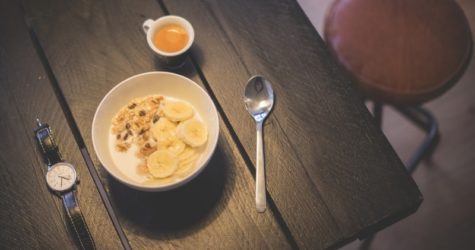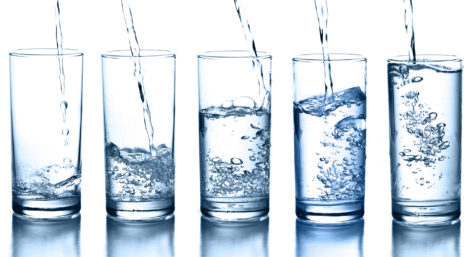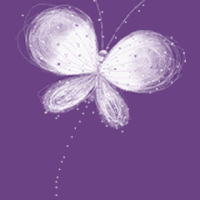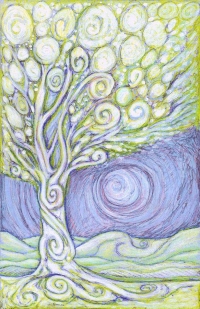Purification
Yogic Kriyas
Certain yogic kriyas which have specific therapeutic values and are highly beneficial in the maintenance of health and the healing of diseases.
There are six specific cleansing techniques, known as Shat Kriyas, which eliminate impurities and help cure many ailments. Of these, the following four can be practiced safely:
Jalaneti
Most diseases of the nose and throat are caused by the accumulation of impurities in the nasal passage. Jalaneti is a process of cleansing the air passage of the nostrils and the throat by washing them with tepid saline water. Take a clean jalaneti pot.
Put half a teaspoonful of salt in the pot and fill it with lukewarm drinking water. Stand up and tilt your head slightly to the right. Insert the nozzle of the pot in the left nostril and let the water flow into it. Inhale and exhale through the mouth, allowing the water to flow out through the right nostril. Reverse this process by tilting your head to the left and letting the water flow from the right to the left nostril.
Jalaneti should be practiced only in the morning. It will relieve sore throat, cold, cough, sinusitis, migraine, headache and cases of inflammation of the nasal membranes. It keeps the head cool and improves vision.
Vamana Dhouti or Kunjal
This is a process of cleansing the interior of the stomach. Drink four to six glasses of tepid water, with a little salt added to it, early in the morning on an empty stomach.
Then stand up, bend forward, insert the middle and index fingers of the right hand into the mouth until they touch the uvulva. Tickle it until you feel a vomiting sensation.
The saline water thus ejected will bring up bile and other toxic matter with it. Repeat the process till all the water is vomited out. This should be done once a week or as and when necessary. It is beneficial for cleansing the stomach in cases of excessive bile, constipation, and gastric troubles.
Persons suffering from hyperacidity should perform kunjal with unsalted water. It gives relief from headaches, nervous weakness, chronic cold, cough and asthma. It should not be practiced by those suffering from high blood pressure, ulcers and heart trouble.
Kapalbhati
Kapala means ‘skull’ and bhati means ‘shine’. This is a respiratory exercise for the abdomen and diaphragm. The channels inside the nose and other parts of the respiratory system are purified by this exercise. In the process, the brain is also cleared.
Sit in a comfortable position, preferably in padmasana. Exercise the diaphragm by exhaling suddenly and quickly through both nostrils, producing a hissing sound. Inhaling will be automotive and passive. The air should be exhaled from the lungs with a sudden, vigorous inward stroke of the front abdominal muscles. The abdominal stroke should be complete and the breath should be expelled fully. While inhaling, no willful expansion is necessary and the abdominal muscles should be relaxed.
This exercise should be done in three phases, each consisting of 20 to 30 strokes a minute. A little rest can be taken in between. Throughout, the thoracic muscles should be kept contracted. Kapalbhati enables the inhalation of a good amount of oxygen which purifies the blood and strengthens the nerve and brain centers. This kriya provides relief in many lung, throat and chest diseases like chronic bronchitis, asthma, pleurisy and tuberculosis.
Trataka
In yoga, four exercises have been prescribed for strengthening weak eye muscles, relieving eye strain and curing of eye disease. They are known as ‘ Trataka ‘ ,which in sanskrit means ‘ Winkles gaze at a particular point.” or looking at an object with awareness.
The four tratakas are:
- Dakshinay jatru trataka in which, with face forwards, the eyes are fixed on the tip of the right shoulder
- Vamajatru trataka, in which the eyes are fixed on the tip of the left shoulder
- Namikagra trataka, in which the eyes are focused on the tip of the nose
- Bhrumadhya trataka, in which the eyes are focused on the space between the eyebrows.
These exercises should be practiced from a meditative position like padmasana or vajrasana. The gaze should be maintained for as long as you are comfortable, gradually increasing the period from 10 to 20 and then to 30 seconds. The eyes should be closed and rested after each exercise. Persons with acute myopia should perform the tratakas with their eyes closed.
Fasting – The Master Remedy

Fasting refers to complete abstinence from food for a short or long period for a specific purpose. The word is derived from the old English, ‘feastan’ which means to fast, observe, be strict. Fasting is nature’s oldest, most effective and yet least expensive method of treating disease. It is recognized as the cornerstone of natural healing. Dr. Arnold Eheret, the originator of the mucus-less diet healing system, describes it as ” nature’s only universal and omnipotent remedy of healing” and “nature’s only fundamental law of all healing and curing. ”
The practice of fasting is one of the most ancient customs. It is followed in almost every religion. The Mohammedan, the Buddhists, the Hindus and many others have their periods of strict fasting. The saints of medieval times laid great stress on this method.
Fasting in disease was advocated by the school of natural philosopher, Asclepiades, more than two thousand years ago. Throughout medical history, it has been regarded as one of the most dependable curative methods. Hippocrates, Galen, Paracelsus and many other great authorities on medicine prescribed it. Many noted modern physicians have successfully employed this system of healing in the treatment of numerous diseases.
The common cause of all diseases is the accumulation of waste and poisonous matter in the body which results from overeating. The majority of persons eat too much and follow sedentary occupations which do not permit sufficient and proper exercise for utilization of this large quantity of food. This surplus overburdens the digestive and assimilative organs and clogs up the system with impurities or poisons. Digestion and elimination become slow and the functional activity of the whole system gets deranged.
The onset of disease is merely the process of ridding the system of these impurities. Every disease can be healed by only one remedy – by doing just the opposite of what causes it, that is, by reducing the food intake or fasting.
By depriving the body of food for a time ,the organs of elimination such as the bowels, kidneys, skin and lungs are given opportunity to expel, unhampered, the overload of accumulated waste from the system. Thus, fasting is merely the process of purification and an effective and quick method of cure. It assists nature in her continuous effort to expel foreign matter and disease producing waste from the body, thereby correcting the faults of improper diet and wrong living. It also leads to regeneration of the blood as well as the repair and regeneration of the various tissues of the body.
Duration
The duration of the fast depends upon the age of the patient, the nature of the disease and the amount and type of drugs previously used. The duration is important, because long periods of fasting can be dangerous if undertaken without competent professional guidance. It is, therefore, advisable to undertake a series of short fasts of two to three days and gradually increase the duration of each succeeding fast by a day or so.
The period, however, should not exceed a week of total fasting at a time. This will enable the chronically sick body to gradually and slowly eliminate toxic waste matter without seriously affecting the natural functioning of the body. A correct mode of living and a balanced diet after the fast will restore vigor and vitality to the individual.
Fasting is highly beneficial in practically all kinds of stomach and intestinal disorders and in serious conditions of the kidneys and liver. It is a miracle cure for eczema and other skin diseases and offers the only hope of permanent cure in many cases. The various nervous disorders also respond favorably to this mode of treatment.
Fasting should, however, not be restored to in every illness. In cases of diabetes, advanced stages of tuberculosis, and extreme cases of neurasthenia, long fasts will be harmful. IN most cases, however , no harm will accrue to fasting patients, provided they take rest, and are under proper professional care.
Fasting – Methods
The best, safest and most effective method of fasting is juice fasting. Although the old classic form of fasting was a pure water fast, most of the leading authorities on fasting today agree that juice fasting is far superior to a water fast.
According to Dr. Rangar Berg, the world -famous authority on nutrition, “During fasting the body burns up and excretes huge amounts of accumulated wastes. We can help this cleansing process by drinking alkaline juice instead of water while fasting … Elimination of uric acid and other inorganic acids will be accelerated. And sugars in juices will strengthen the heart … juice fasting is, therefore, the best form of fasting. ”
Vitamins, minerals, enzymes and trace elements in fresh, raw vegetable and fruit juices are extremely beneficial in normalizing all the body processes. They supply essential elements for the body’s own healing activity and cell regeneration and thus speeding the recovery. All juices should be prepared from fresh fruit immediately before drinking. Canned or frozen juices should not be used.
A precautionary measure which must be observed in all cases of fasting is the complete emptying of the bowels at the beginning of the fast by enema so that the patient is not bothered by gas or decomposing matter formed from the excrement remaining in the body. Enemas should be administered at least every alternate day during the fasting period. The patient should get as much fresh air as possible and should drink plain lukewarm water when thirsty. Fresh juices may be diluted with pure water. The total liquid intake should be approximately six to eight glasses.
A lot of energy is spent during the fast in the process of eliminating accumulated poisons and toxic waste materials. It is, therefore, of utmost importance that the patients gets as much physical rest and mental relaxation as possible during the fast. In cases of fasts in which fruit juices are taken, especially when fresh grapes, oranges or grapefruit are used exclusively, the toxic wastes enter the blood -stream rapidly, resulting in an overload of toxic matter, which affects normal bodily functions. This often results in dizzy spells, followed by diarrhea and vomiting. If this physical reaction persists, it is advisable to discontinue the fast and take cooked vegetables containing adequate roughage such as spinach and beets until the body functioning returns to normal.
The overweight person finds it much easier to go without food. Loss of weight causes no fear and the patient’s attitude makes fasting almost a pleasure. The first day’s hunger pangs are perhaps the most difficult to bear. The craving for food will, however, gradually decrease as the fast progresses. Seriously sick persons have no desire for food and fasting comes naturally to them. The simplest rule is to stop eating until the appetite returns or until one feels completely well.
Only very simple exercises like short walks may be undertaken during the fast. A warm water or neutral bath may be taken during the period. Cold baths are not advisable. Sun and air baths should be taken daily. Fasting sometimes produces a state of sleeplessness which can be overcome by a warm tub bath, hot water bottles at the feet and by drinking one or two glasses of hot water.
Benefits
There are several benefit of fasting. During a long fast, the body feeds upon its reserves. Being deprived of needed nutrients, particularly of protein and fats, it will burn and digest its own tissues by the process of autolysis or self-digestion. But it will not do so indiscriminately. The body will first decompose and burn those cells and tissues which are diseased, damaged, aged or dead. The essential tissues and vital organs, the glands, the nervous system and the brain are not damaged or digested in fasting.
Here lies the secret of the effectiveness of fasting as a curative and rejuvenative method. During fasting, the building of new and healthy cells are sped up by the amino acids released from the diseased cells. The capacity of the eliminative organs, that is, lungs, liver, kidneys and the skin is greatly increased as they are relieved of the usual burden of digesting food and eliminating the resultant wastes. They are, therefore, able to quickly expel old accumulated wastes and toxins.
Fasting affords a physiological rest to the digestive, assimilative and protective organs. As a result, the digestion of food and the utilization of nutrients is greatly improved after fasting. The fast also exerts a normalizing, stabilizing and rejuvenating effect on all the vital physiological, nervous and mental functions.

Breaking the Fast
The success of the fast depends largely on how it is broken. This is the most significant phase. The main rules for breaking the fast are: do not overeat, eat slowly and chew your food thoroughly; and take several days for the gradual change to the normal diet. If the transition to eating solid foods is carefully planned, there will be no discomfort or damage. The patient should also continue to take rest during the transition period. The right food after a fast is as important and decisive for proper results as the fast itself.










